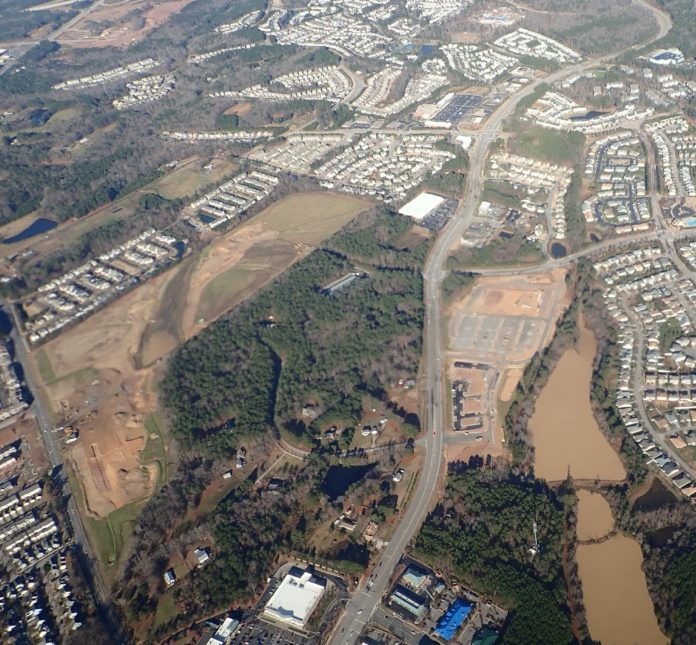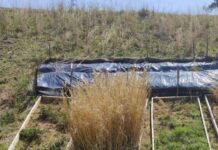
When land disturbing activities occur, a great deal of sediment can be generated from rain and wind, but often, at some point, an attempt to stabilize the site with vegetation is undertaken. The success of this effort can depend on many factors, and this is the subject of two studies in very different locations and types of land disturbance.
The effect of housing development on the amount of exposed area and impervious surfaces was determined using aerial photography for six municipalities in the Melbourne, Australia area from 2011–2020.1 The six were chosen because of the availability of frequent aerial imagery and rapid growth. Over the course of the study, the phases of development (site preparation, mass grading/major earthworks, roads and storm drains, house construction and landscaping) were determined within the various subdivisions. Mass grading took 1–1.5 years for most sites and resulted in 100% bare soil for much of this time. Road construction followed and took a similar amount of time, increasing imperviousness to 20%–30%. The year following resulted in more than 50% of the houses completed, with further construction slowing steadily for the next few years. Within-lot imperviousness was 73%–78% upon house completion, with overall subdivision reaching 66%–78%. Landscaping was complete three to four years after house construction started, with an overall timeline ranging from four to nine years to final development. The potential sediment delivery is highest during the grading phase but remains relatively high during road and house construction due to the greater imperviousness and direct connection to streams via the storm drain system. From a conceptual model, they estimated that 29% of potential sediment loss from this type of development was during the road and storm drain phase, and 27% was from the house construction phase (Figure 1).
The other study occurred at the other side of the earth in northern Northwest Territories, Canada, where approaches to reclamation of a diamond mine were being tested.2 This arctic site presented many challenges such as cold temperatures, low precipitation and short growing season.
Three substrates were produced as a result of mining operations: processed kimberlite (the diamond-bearing magma intrusion mined), crushed rock and lakebed sediment. Each of these were tested for vegetation growth alone or with amendment (sewage sludge or soil), microtopography (large and small mounds, depressions and boulders, furrows or flat) or a combination of one amendment and one microtopography. A mix of native grasses and forbs from the area were seeded, and vegetation analysis was done for up to four years.
The crushed rock had the best vegetation followed by the lakebed sediment, with very little vegetation on the kimberlite due to poor physical and chemical properties for plants. The microtopographic treatments had significant effect in the kimberlite, particularly in depressions, but had little effect in the lakebed sediment or crushed rock materials. Sewage sludge was generally beneficial in the first years but declined after that. After four years, crushed rock with sewage resulted in nearly 60% cover while only 6% in kimberlite. The soil salvaged from a stockpile had no beneficial effect, possibly due to the low application rate of approximately 2.5% by volume. A test of anionic polyacrylamide at 16.7 kg ha-1 for erosion control was also part of the study, but there were no effects detected. The authors suggested that a long-term study of the potential for these treatments to result in soil development and a stable cover will be needed.
References:
Russell, K. 2021. Potential sediment supply fluxes associated with greenfield residential construction. Anthropocene 35 (2021) 100300. https://doi.org/
10.1016/j.ancene.2021.100300.
Miller, V.S., M. A. Naeth, S. R. Wilkinson. 2021. Micro topography, organic amendments and an erosion control product for reclamation of waste materials at an arctic diamond mine. Ecological Engineering 172 (2021) 106399. https://doi.org/10.1016/
j.ecoleng.2021.106399.
About the Expert
Rich McLaughlin, Ph.D., received a B.S. in natural resource management at Virginia Tech and studied soils and soil chemistry at Purdue University for his master’s degree and doctoral degree. He is a professor and extension specialist in the Soil Science Department at North Carolina State University in Raleigh, North Carolina, specializing in erosion, sediment and turbidity control.












